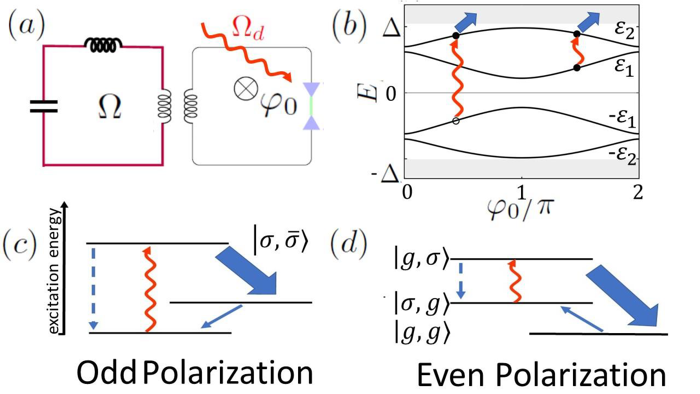Dynamical parity selection in superconducting weak links
Nico Ackermann1, Alex Zazunov2, Sunghun Park1,3, Reinhold Egger2, Alfredo Levy Yeyati1
1 Departamento de Física Teórica de la Materia Condensada, Universidad Autónoma de Madrid, Spain
2 Institut für Theoretische Physik, Heinrich-Heine-Universität, D-40225 Düsseldorf, Germany
3 Center for Theoretical Physics of Complex Systems, Institute for Basic Science, Daejeon 34126, South Korea
Excess quasiparticles play a crucial role in superconducting quantum devices ranging from qubits to quantum sensors. In this work we analyze their dynamics for phase-biased finite-length weak links with several Andreev subgap states, where the coupling to a microwave resonator allows for parity state (even/odd) readout. Our theory shows that almost perfect dynamical polarization in a given parity sector is achievable by applying a microwave pulse matching a transition in the opposite parity sector. Our results qualitatively explain key features of recent experiments on hybrid semiconducting nanowire Josephson junctions [1] and provide theoretical guidelines for efficiently controlling the parity state of Andreev qubits.

Fig: (a) Schematic setup: phase biased weak link coupled to a microwave resonator (b) Subgap states as a function of phase for a finite length weak link (c-d) Excitation of even/odd many-body states leading to polarization in the odd/even parity sector.
[1] J.J. Wesdorp, I.L. Grünhaupt, A. Vaartjes, M. Pita-Vidal, A. Bargerbos, L.J. Splitthoff, P. Krogstrup, B. van Heck, G. de Lange, G, “Dynamical polarization of the fermion parity in a nanowire Josephson junction”, arXiv:2112.01936.